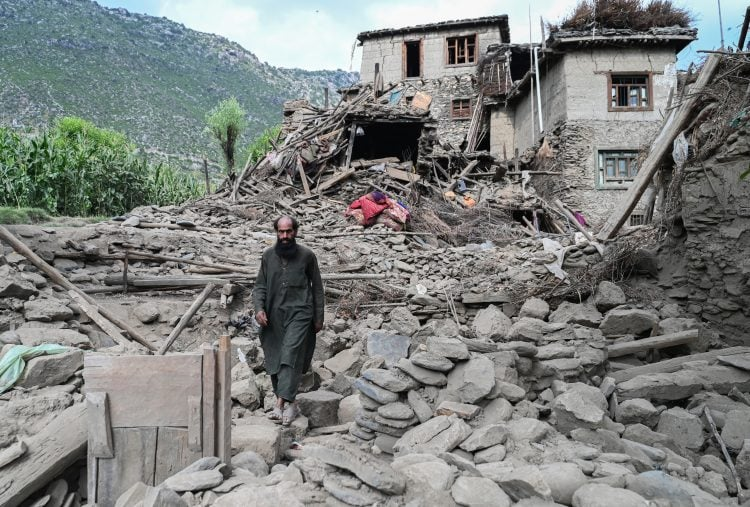RASC News Agency: Days after the catastrophic earthquake struck Afghanistan’s eastern province of Kunar, local Taliban authorities have acknowledged that hundreds of bodies remain trapped beneath collapsed homes and rubble, while aid operations struggle under severe logistical constraints. The disaster has once again laid bare the regime’s inability to respond to national emergencies, leaving survivors reliant on international organizations and local volunteers. Mullah Ihsanullah Ihsan, head of the Taliban-run Natural Disaster Management Authority in Kunar, admitted on Tuesday, September 2, that officials have no clear estimate of how many victims remain under debris. He conceded that rescue operations are continuing but at a painfully slow pace. “We cannot predict how many bodies are still trapped,” he told reporters, before offering vague assurances that efforts would be completed quickly so that aid distribution could begin. Such assurances, however, echo a familiar pattern of promises from Taliban authorities that rarely materialize into effective action.
Rescue teams reportedly reached four villages on Monday, but access to remote areas remains blocked. The mountainous terrain, heavy rains, and impassable roads have crippled efforts to deliver aid. In villages along the Pakistani border, entire mud-brick communities have been flattened, yet survivors are left digging through debris with their bare hands, as the Taliban lack both machinery and the technical expertise required for large-scale rescue operations. The World Health Organization (WHO) has estimated that nearly 12,000 people have been affected by the earthquake, many of them in urgent need of food, shelter, and medical assistance. Aid experts warn that without swift and transparent delivery of international support, the humanitarian crisis will escalate rapidly. The Taliban, however, have provided no credible plan for coordination and remain heavily dependent on external actors to carry out even basic relief.
Tragically, reports from local sources indicate that several pregnant women have died in Kunar either during childbirth or from untreated injuries due to the absence of qualified female doctors. Restrictions imposed under Taliban rule, which have forced thousands of women professionals out of public service, have turned an already dire situation into a deadly one. Health specialists argue that the regime’s systemic exclusion of women has directly cost lives in the aftermath of this disaster. Photographs and videos circulating on social media reveal the enormity of destruction: families digging through rubble for loved ones, children shivering in makeshift tents, and survivors mourning beside rows of hastily dug graves. Yet despite such harrowing scenes, Taliban officials continue to issue statements of intent rather than tangible relief. Their inability to mobilize resources, repair roads, or establish emergency medical services underscores the absence of governance in areas under their control.
International solidarity has been strong, with countries and humanitarian organizations pledging aid. But the gap between promises and delivery remains vast, compounded by widespread fears that Taliban authorities may mismanage or divert assistance. Survivors, meanwhile, demand that aid bypass the regime and be distributed directly to those in need. For the people of Kunar, the earthquake is not only a natural tragedy but also a political one exposing the Taliban as incapable of protecting their citizens in times of crisis. What should have been a moment of national response has instead become another reminder that Afghanistanis are largely left to the mercy of foreign aid and their own resilience, while the de facto rulers watch from the sidelines, issuing press statements that mask their powerlessness.






